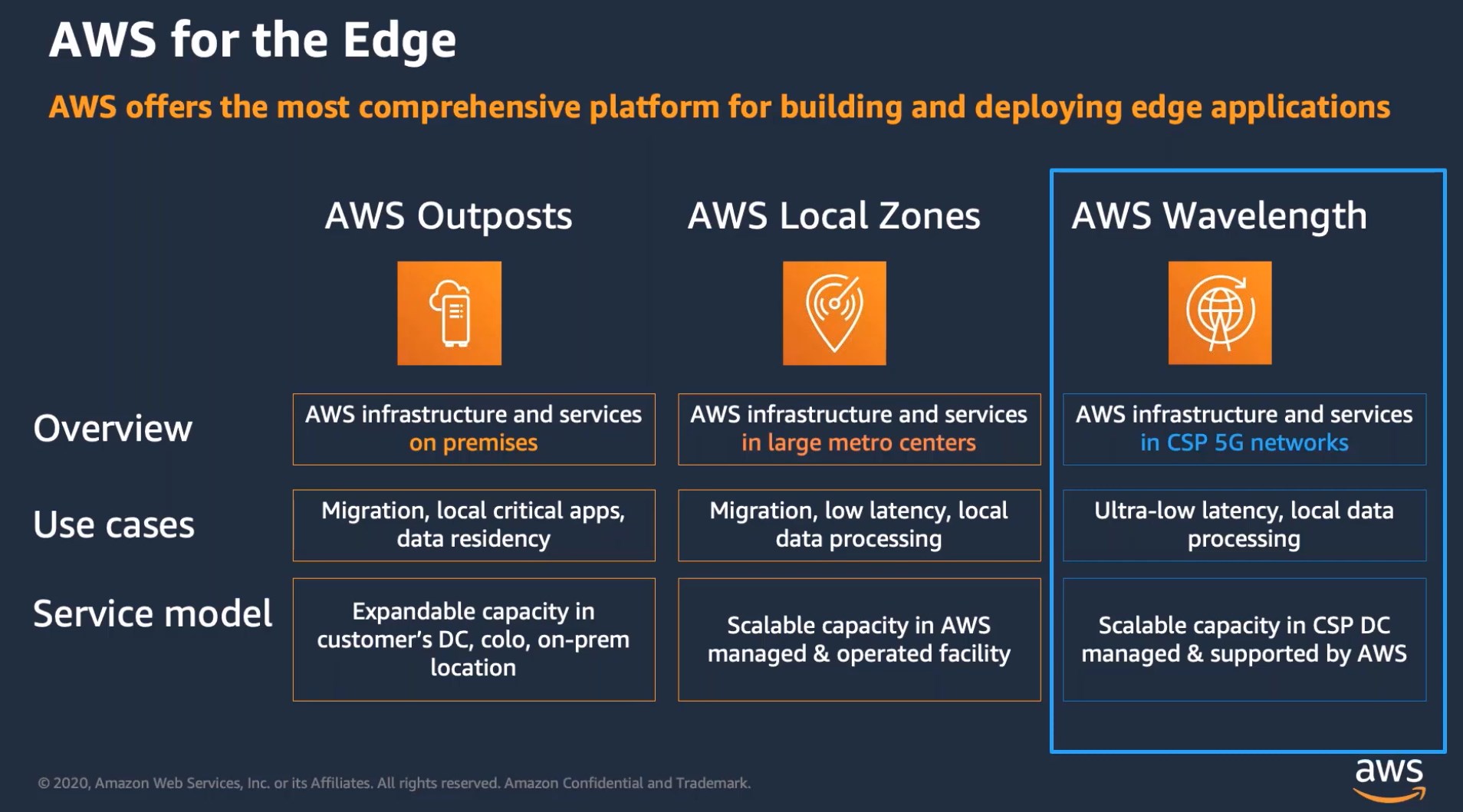Bell has deployed the first AWS Wavelength Zone in Canada to accelerate 5G network performance at the edge.
AWS Wavelength is part of AWS’ platform for building and deploying edge applications. The other two components, AWS Outposts and AWS Local Zones, target on-premises and large metro deployments respectively. AWS Wavelength is designed specifically for communications service providers’ (CSP) 5G networks, for moving data processing close to the data generation point to minimize latency.

Edge computing is also ideal for offloading compute-heavy workloads from local devices, saving power and consolidating distributed data-processing nodes. For example, offloading video processing to the edge improves capturing flexibility and reduces the need for high-powered computing on the device or on premises. AI inference is another potential application as it often requires the inferencing device to be close to the end-user for immediate insights.

First announced in June 2021, Bell’s Public Multi-Access Edge Computing (MEC) with AWS Wavelength embeds AWS compute and storage services at the edge of the Bell 5G network. The service targets 5G applications including visual data processing, AR/VR, artificial intelligence, and robotics, in industries such as manufacturing, media, transportation and more.
All the mumbo-jumbo sounds pretty abstract. Let’s take a step down the ladder of abstraction and see some real-world examples of what Bell’s new service actually enables.
Tiny Mile delivery robots
Tiny Mile’s adorable Snappy delivery bots are ideal for transporting small food items like coffees and sandwiches to urban customers. In many cases, these nimble robots negotiate the dense cityscape better than cars. And because they’re battery-powered, they produce no greenhouse gas.

Because they are controlled remotely by a human operator, they need a robust, low latency network to ensure a consistent timely video feed. This is where the AWS Wavelength comes in. The company says that the service was able to reduce its video feed latency by around 30 per cent, as well as improve its real-time object detection and collision avoidance capabilities. Tiny Mile also aims to transform the robot to be fully autonomous in the near future.
Drone Delivery Canada
Drone delivery is taking off, especially in areas with difficult terrain common in Canada’s rural areas. Drone Delivery Canada has been working with Bell and its MEC service to one day turn their delivery drones fully autonomous.

To achieve this, Drone Deliver Canada says it needs the proper software platforms as well as a reliable network to make instant decisions based on information sent from the drone’s sensors. The drone must make split-second decisions to prevent collisions with objects, and to decide whether it’s safe to land and take off. The AWS Wavelength Zones address this need.
The initial AWS Wavelength Zone is located in Toronto. Bell plans on expanding its availability across Canada in future.
